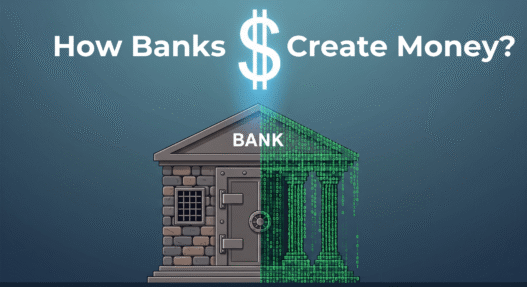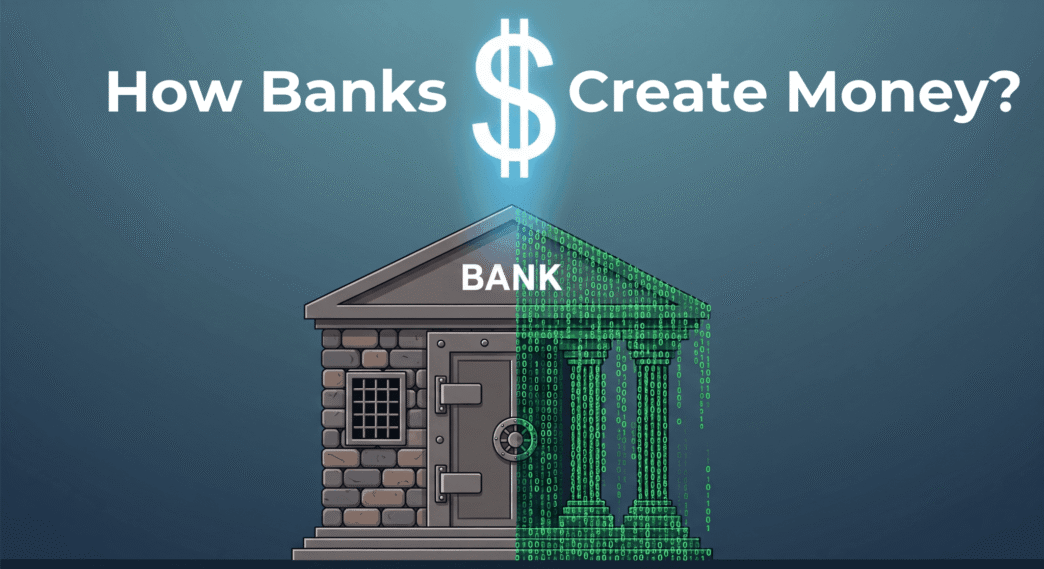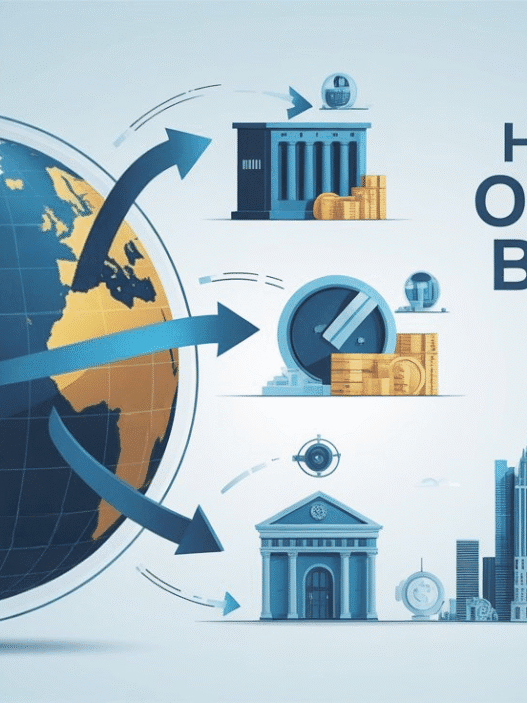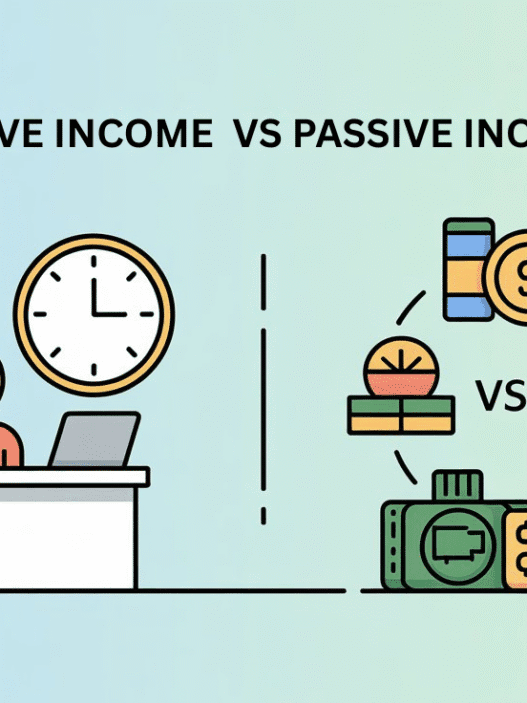Have you ever stopped to think about whether the money in your bank account is actually “real”? Most people assume that every dollar or rupee sitting in their account is backed by stacks of physical cash hidden away in a vault. The truth is far more fascinating and shocking. Around 90% of the money in the world doesn’t actually exist as cash. Instead, it exists as promises, digital entries, and trust in the financial system.
In this guide, I’ll explain to you how banks create money legally, why most money is just numbers on a screen, and how the wealthy take advantage of “cheap money” while the average person gets stuck with expensive money. By the end, you’ll clearly understand why the entire global economy runs on credit, and how this invisible system affects your life every single day.
Why Most Money Doesn’t Exist
Imagine this: I lend you $100. You lend that same $100 to your friend Jimmy. Then Jimmy lends the $100 back to me. Suddenly, within our small circle, we now have $300 in debt contracts, even though only $100 of real money exists.
This simple example illustrates how debt multiplies far beyond the physical cash in circulation. When we extrapolate this concept to the entire global financial system, it explains why the world is estimated to have over $300 trillion in debt, while only a fraction of that exists in actual cash.
Here’s the catch: even though the money isn’t “real” in the physical sense, we all get to spend it. That’s the foundation of a credit-based economy. The promise of repayment is what keeps the wheels turning. As long as we collectively trust that debts will be repaid, the system keeps expanding.
The Illusion of Money in Your Bank Account

When you open your banking app and see your balance, you’re not looking at stacks of money sitting safely in a vault. You’re looking at numbers promises that your bank owes you money.
Banks know that, on average, only around 10% of total deposits are ever withdrawn as cash at any given time. This is why they don’t keep 100% of deposits on hand. For example, in the United States, the total broad money supply is around $21 trillion, but only about $5.5 trillion exists as paper cash. The rest? Just digital balances.
If everyone suddenly demanded to withdraw their money at the same time, the banking system would collapse within hours. This is called a bank run, and it has happened multiple times throughout history. To prevent such chaos, society operates on an “economic pinky promise”: we collectively agree not to all withdraw at once.
Where Does New Money Come From?

So, if banks don’t just hand out money they already have, where do they get it? The answer is simple but mind-blowing: they create it.
Here’s how the process works:
- You apply for a loan for example, $200,000 to buy a house.
- The bank checks your credit history, income, and risk level.
- Once approved, the bank types the amount into your account.
- That “money” didn’t exist yesterday. Now it does, because the bank created it based on your promise to repay.
This process is called fractional reserve banking. Traditionally, banks were required to keep a small fraction of deposits as reserves and could lend out the rest. If you deposited $1,000, they might keep $100 in reserve and lend $900 to someone else. That $900 becomes a new deposit somewhere else, and the cycle continues creating new money over and over.
But here’s the twist: in 2020, during the COVID-19 crisis, the U.S. Federal Reserve eliminated all reserve requirements. This means American banks are no longer required to hold even a fraction of deposits as cash in reserve. They can create loans freely as long as they meet capital requirements and assess borrowers as creditworthy. In other words, “printing money” today often just means typing it into a digital system.
Cheap Money vs. Expensive Money

Now that you understand how banks create money, here’s the key part: not all money costs the same.
When banks decide whether to give you a loan, they assign an interest rate, which is essentially the price of borrowing money. Wealthy individuals with good credit scores can borrow at low interest rates, sometimes as low as 3% while others with poor credit may only qualify for loans with 15% to 25% interest.
This difference creates a massive wealth gap. Having access to cheap money is one of the greatest advantages the rich enjoy.
The Power of Credit Arbitrage

If you can borrow money cheaply, you can use it to make more money. This strategy is called credit arbitrage.
Here’s a simple example:
- The S&P 500, a stock index of 500 major U.S. companies, has historically returned around 10% per year.
- If you borrow money at 3% interest and invest it in the S&P 500, you pocket the 7% difference.
You didn’t work harder. You simply used access to cheap money to make money work for you. This is how rich people multiply their wealth effortlessly.
When Cheap Money Goes Wrong: Lessons from Japan

Cheap money can be powerful, but it can also be dangerous. In the 1980s, Japan experienced a booming economy with low interest rates and easy credit. Investors borrowed money in yen (cheap) and invested in U.S. assets (high returns). This became known as the carry trade.
At first, it seemed like free money. But when asset prices collapsed in the early 1990s, Japan’s economy entered what is now called the “Lost Decade”, a period of over 10 years of stagnation. Even today, Japan is still dealing with the aftereffects.
The lesson? Cheap money can fuel incredible growth, but when it flows into speculation instead of productive investments, it creates bubbles that eventually burst.
Why This “Illusion” Works
On the surface, our financial system looks fragile. It’s built on trust, promises, and the assumption that not everyone will demand their cash at once. But despite its flaws, this system allows economies to grow and societies to develop far faster than if we had to wait and “save up” before building infrastructure or funding innovation.
Imagine if governments had to save for decades before building new highways, hospitals, or energy projects. Progress would grind to a halt. By allowing money creation through credit, development can happen today using tomorrow’s resources.
In short: it’s not perfect, but it works. Until someone comes up with a better system, this is the best model humanity has for scaling productivity and wealth creation.
What This Means for You

Now that you understand how banks create money, you see why money isn’t just about working harder or saving more. It’s about learning how the system works and playing it to your advantage.
- If you build a strong credit profile, you’ll gain access to cheap money, which opens doors to investments and wealth-building opportunities.
- If you remain stuck with expensive money, you’ll always be on the losing side of the system.
The secret is this: money isn’t just what you earn. It’s also what you can borrow cheaply and use wisely.
By understanding the mechanics of banking, you’re no longer just a passive participant you’re an informed player in the global money game.
If you enjoyed this guide and want more insights on money, investing, and building wealth, visit Forcefall.com for more in-depth articles and resources.















